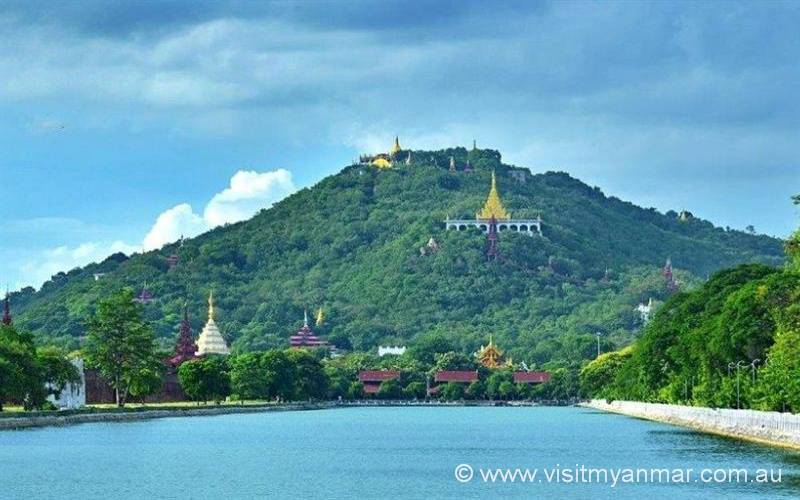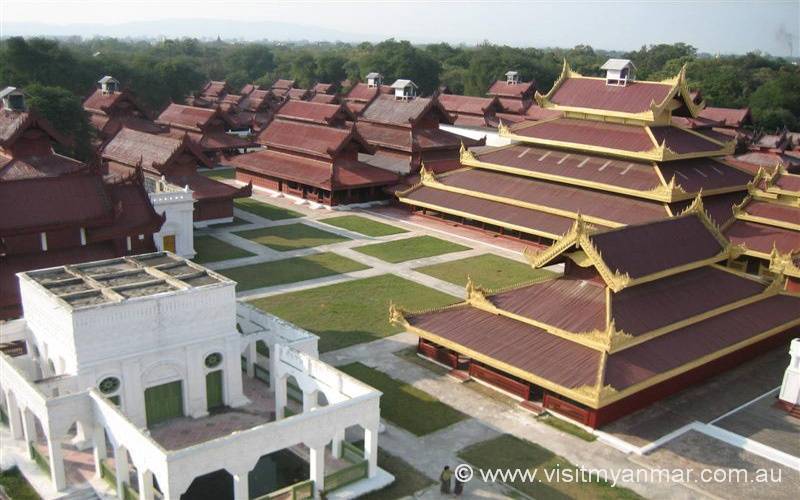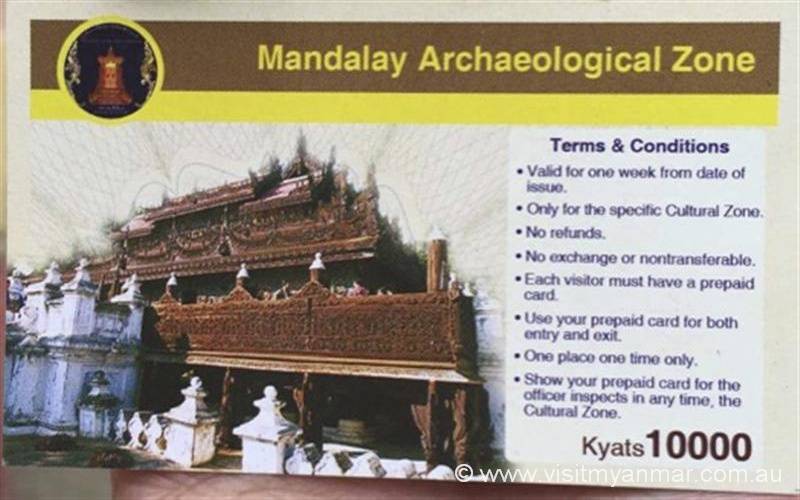Mandalay is starting to become more popular with overseas travellers who are looking to see and experience the treasures in this ancient land.
Nestled on the eastern bank of the Ayeyarwady River (previously Irrawaddy River) Mandalay is the second-largest city in Myanmar (Burma) after Yangon, with a polulation of around 1.5 million.
 A lot of tourists use Mandalay as a base for day trips to see all of the surrounding sights. Sights to experience when you visit Mandalay include the Royal Palace, Mandalay Hill, U Bein Bridge, Wood and Handicraft shops, Gold Leaf making shops, the Jade & Gemstone Market, the Silk weaving shops, a host of stunning temples & pagodas, Bhuddist Monastries, the Zegyo Market, numerous local street and night markets, street food stalls and local restaurants, Burmese cooking schools, traditional puppet theatres and other attractions. As well as seeing all of this you can then take day trips to beautiful archaeological sites like Amarapura, Inwa (Ava), Sagaing and Mingun.
A lot of tourists use Mandalay as a base for day trips to see all of the surrounding sights. Sights to experience when you visit Mandalay include the Royal Palace, Mandalay Hill, U Bein Bridge, Wood and Handicraft shops, Gold Leaf making shops, the Jade & Gemstone Market, the Silk weaving shops, a host of stunning temples & pagodas, Bhuddist Monastries, the Zegyo Market, numerous local street and night markets, street food stalls and local restaurants, Burmese cooking schools, traditional puppet theatres and other attractions. As well as seeing all of this you can then take day trips to beautiful archaeological sites like Amarapura, Inwa (Ava), Sagaing and Mingun.
There are various ways of getting to Mandalay. From Yangon it is only a 1hr 20 minute flight, or 1 hour 50 minutes flight from Bangkok. See our Getting To Mandalay page for more information.
 Mandalay was the Capital of Burma from 1855 to 1885 and is the home of the last Royal Palace of Burma. Prior Burmese Royal Capitals going back to 850 AD included Bagan (then called Pagan) and the nearby towns of Sagaing, Inwa (Ava) and Amarapura.
Mandalay was the Capital of Burma from 1855 to 1885 and is the home of the last Royal Palace of Burma. Prior Burmese Royal Capitals going back to 850 AD included Bagan (then called Pagan) and the nearby towns of Sagaing, Inwa (Ava) and Amarapura.
In 1885 Mandalay was invaded by the British who exiled the Royal family to India and stripped the Royal Palace of its glorious aftifacts. Yangon (Rangoon) was thereafter the Capital. Since Myanmar gained independence from the British in 1948 Mandalay has grown to become the cultural center of Myanmar.
Over the last few years tourism has gradually started to transform this once sleepy town into a place where travellers can start their exploration of this amazing country and get to know the polite and friendly Burmese people who are full of smiles and always happy to help you.
The center of the city is dominated by the Royal Palace with its encircling 8km long 60m wide moat. The newer parts of the city have grown up around the palace but mostly to the south of it. To visit the Royal Palace and a lot of the temples, pagodas and ancient sites in and around Mandalay you will need to purchase an Archaeological Zone Ticket for 10,000 Kyat – $10. The ticket is valid for 1 week. At a few of the temples and pagodas you will also have to pay currently a 1,000K – $1 camera fee. There are rumours that this may increase by 2018 to either 2 or 3,000K.
 (Tip – start at the Mandalay Royal Palace and buy the Archaeological Zone Ticket there. Keep it handy in your wallet as you will have to take it out to get it stamped at some of the places you visit.)
(Tip – start at the Mandalay Royal Palace and buy the Archaeological Zone Ticket there. Keep it handy in your wallet as you will have to take it out to get it stamped at some of the places you visit.)
Just North of the Palace is Mandalay Hill, the highest spot in a mostly flat landscape. You can either walk up the long stairway to the top or ride all the way to the top up the roadway. Terrific views from up there.
For getting around Mandalay itself you have various options. The city itself is flat but far too spread out to walk all around it. Best options are bicyle, motorbike (motorcycle) or car taxi. Bicycles from $1 to $5 per day, ride yourself motorbikes $10 to $25 per day plus fuel, motorbike taxi (one passenger) $10 to $15 per day and car taxis (3-5 passengers) $25 to $35 per day. Alternatively hire a tour guide and they will take you around to see the splendour of Mandalay. See our Getting Around Mandalay page for more information.
Recommended Mandalay Tour Guide (English speaking, friendly, reliable and economical)
Mr. Kyaw Naing Win (Kyaw)
Mob (+95) 92 5904 7426 – email – kyawnaing2110@gmail.com
Recommended Car Taxi (Friendly, reliable and economical)
Mr. U Than Thwe
Mob (+95) 92 5911 7141
